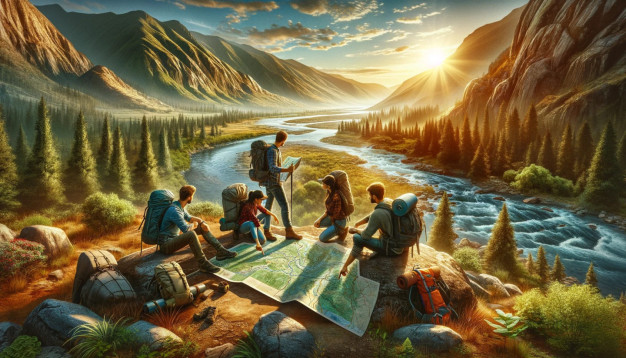
Introduction to Remote Adventures
Defining Remote Adventure Travel
Remote adventure travel is a journey to the less-trodden parts of the globe—places where WiFi is a myth, and the local wildlife may not have an Instagram account. It’s a chance to disconnect from the constant buzz of modern life and reconnect with the wild, rugged corners of the planet.
Choosing Your Destination
Researching Remote Locations
Begin your quest for the ultimate remote adventure by diving into the rabbit hole of travel forums, blogs, and maybe even an atlas if you’re feeling old-school. Look beyond the glossy travel brochures and seek out destinations that require more than just a cab ride from the airport.
Considering Climate and Season
Unless you’re into frostbite or heatstroke as vacation souvenirs, align your travel dates with the climate and season of your chosen destination. Research is vital—monsoon season can turn your jungle trek into a mud wrestling tournament.
Preparation and Planning
Budgeting for Your Trip
Unless you’ve discovered a gold mine in your backyard, budgeting is crucial. Remote doesn’t always mean cheap, and adventure doesn’t always mean safe. Factor in the costs of gear, guides, and the goat offering you might need to appease local customs.
Necessary Gear and Equipment
Depending on whether you’re scaling mountains or crossing deserts, your gear will be your best friend or the reason for your chiropractic visits. Pack smart—think multipurpose and durable. And remember, a satellite phone might be more useful than a selfie stick.
Safety Measures and Emergency Planning
Hope for the best, plan for the worst, and consider if your insurance covers being airlifted by helicopter. Inform someone about your travel plans, because a postcard won’t cut it if you go missing.
Travel Logistics
Getting There: Transport Options for Remote Areas
Your journey might include bush planes, donkeys, or your own two feet. Embrace the adventure that comes with reaching your destination—it’s all part of the story you’ll brag about later.
Accommodation: Where to Stay Off the Beaten Path
Accommodations range from a hammock slung between two trees to a cozy mountain hut. Remember that luxury is relative, and the million-star experience of a night sky unspoiled by light pollution beats a five-star hotel any day.
Activities and Itineraries
Popular Activities for Remote Adventures
Activities are the heart of remote adventures—think trekking untouched trails, kayaking through silence, or photographing wildlife that doesn’t pose for selfies.
Building a Flexible Itinerary
Plan enough to avoid disaster, but leave room for spontaneity. Sometimes the trail less traveled is less traveled for a reason—like being a dead end. Flexibility can turn mishaps into adventures.
Staying Connected and Responsible
Communication in Remote Areas
Reliable communication can be as rare as a quiet moment in a city. Satellite devices or local SIM cards can be life-savers when you’re off-grid.
Environmental Responsibility and Ethics
Treat the environment like someone’s home—because it is. Leave no trace, respect wildlife, and remember that your Instagram story isn’t worth damaging a pristine ecosystem.
Conclusion and Next Steps
Embracing the Unexpected in Remote Travel
Remote adventures offer a unique opportunity to explore, learn, and grow. They demand resilience, flexibility, and a sense of humor. So plan thoroughly, pack your wit alongside your waterproofs, and dive into the uncharted with a spirit of discovery.